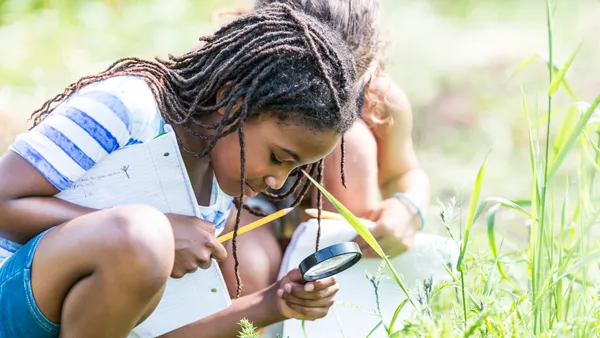Dive Brief:
- A study by the Society for Industrial and Applied Mathematics (SIAM) of 1,100 high school students found 60% want teachers to be more creative when teaching science, technology, engineering and mathematics (STEM) courses, according to eSchoolNews.
- How can educators do that? Around 32% of the survey respondents suggested using humor, either through videos or projects. Meanwhile, 49% of the 11th- and 12th-graders surveyed said teachers should make STEM relatable to their lives, and 35% said classrooms should be equipped with more technology.
- The students also said the federal government should boost STEM by adding more competitions and projects; supplying more resources and technology to schools; increasing the number of STEM awards and scholarships; and funding more after-school STEM clubs.
Dive Insight:
Finding a way to tie real-world stories to a lecture can help engage students in any subject. Making them laugh in the process? Well, researchers say that’s even better.
A 2017 study, “Humor, laughter, learning and health!” published by the American Physiological Society (APA), concurred with that thought, even encouraging educators to fold humor into classroom activities. The report noted that teaching is much more than imparting knowledge. To pass on information, in the best possible way, educators are try to connect to students — but also help them retain this information so they can build on it and move forward in their education.
“Specifically, humor improves student performance by attracting and sustaining attention, reducing anxiety, enhancing participation, and increasing motivation,” wrote researchers from Wayne State University School of Medicine in Detroit in the APA study. They also said that humor stimulates multiple physiological systems that decrease stress and increases activation of the body's reward system.
Crucial, though, is to use humor in a way that does not poke fun or put down others — and that is relevant to the course content, the authors wrote.
While leaving the knock-knock jokes behind may be a good idea, knocking oneself — if you’re the teacher — may actually be a great tool. “Self-effacing humor illustrates to students that the teacher is comfortable making mistakes and sharing these experiences with the classroom,” the researchers wrote.










